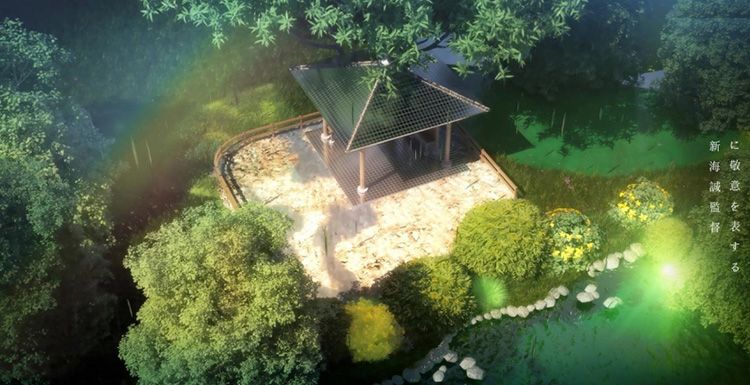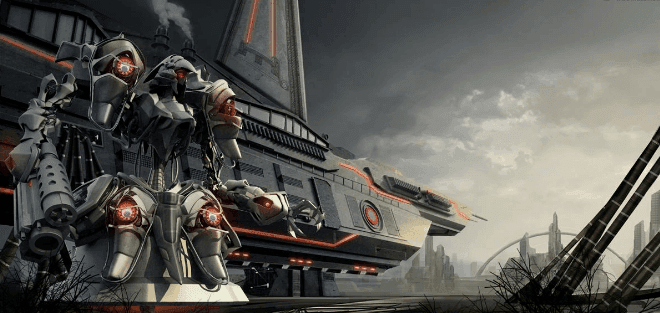V-Ray 3.4 For Sketchup To Make A Work "Container Cabin"

The best cloud rendering services provider and GPU & CPU render farm, Fox Renderfarm, will share with you a 3D tutorial of making container cabin with V-Ray 3.4 for SketchUp.
A rendering exercise using V-Ray 3.4 for SketchUp, which uses the public model of the 3D Warehouse. The software used including SketchUp, V-Ray, Photoshop.
1. Preparation
An existing model is used here, and the model is derived from the 3D Warehouse.

The model has a high level of detail and can be used directly as an exercise. The position of the camera uses a lower angle to look up at the building.

After choosing this angle, I began to think about what kind of effect I would end up with. In architecture and landscape design, there are many times when you need to further express your plan. After browsing through many excellent renderings, we will find that rendering performance requires artistic effects, and this performance is related to architectural photography and aesthetics.
In this work, I observed this angle and felt that the day view was too dull, so I conceived a picture of the evening, and the energy radiated from the back of the building. Then start the arrangement.
2. Model
First of all, in order to add reflection trees to the glass, I copied a batch of trees to the front of the building.

Then in the building, some furniture models were added to add detail.

3. Material
After the model is finished, it will start to be rendered.
In terms of material, the structural part of the building is mainly black steel, which is the general metal making parameter. However, in order to pursue the details, it also benefits from the new material property layer. I added a rust map to the metal as a mask to make the metal more Details. (Reflect Gloss - Use Mix texture in Reflection Glossiness and use rust maps to make two gray masks.)


The cement wall uses a higher resolution texture,

White wall also uses a texture,

Then start to illuminate the scene. In the process of lighting, it is not necessary to be too restrictive to the light. In many cases, it needs to be adjusted according to your own feelings.
The light source of the entire scene is divided into three parts.
The first is the dome lighting, which uses a cool-toned dusk HDR.
The second is the V-Ray sphere light behind the building. The height of the sun is in line with the HDR sun height and the angle is very low.
The third is the lighting in the building's interior, placed directly on top of the building, thanks to interactive rendering, constantly adjusting the intensity and color of the light source.


Interactive rendering greatly facilitates the adjustment of the light. On the ground, I used the VFS grass directly, which is very easy to use, much faster than making grass.

4.Rendering and post-production
I did not make too many adjustments and directly pulled up the plot parameters. And added Z channel, MID.


First, camera raw adjusts the color level, then uses the mask to buckle out the sky, mixing two skyes. Then use the channel to select the background tree to lower the hue, give a curve, raise the shadow and then brush out some details of the dark part, then take a screenshot, then use camera raw to adjust the color gradation, hue contrast and so on. Finally, add light to the architectural lights, and add vignetting around.
Fox Renderfarm hopes it will be of some help to you. It is well known that Fox Renderfarm is an excellent cloud rendering services provider in the CG world, so if you need to find a render farm, why not try Fox Renderfarm, which is offering a free $25 trial for new users? Thanks for reading!
Article reference from 3D artist Han Shilin
Recommended reading
Top 9 Best And Free Blender Render Farms of 2025
2024-12-30
What is Jibaro? Reveal the Story and Techniques Behind the Production of Jibaro "Love, Death & Robots"
2025-11-03
Top 10 Free And Best Cloud Rendering Services in 2025
2025-03-03
9 Best & Free 3D Rendering Software for Architects & Designers
2025-12-08
Top 8 After Effects Render Farm Recommended of 2025
2025-02-10
Easy Cel Shading Tutorial for Cartoon in Blender Within 2 Minutes
2025-11-26
Shocked! The Secret Behind Using 3D to Make 2D Animation was Revealed!
2025-02-10
How to Render High-quality Images in Blender
2024-12-04
Partners
Previous: Rainy Scene Performance of Building Exterior
Next: Three Aspects to See the Differences Between GPU and CPU Rendering (2)
Interested







